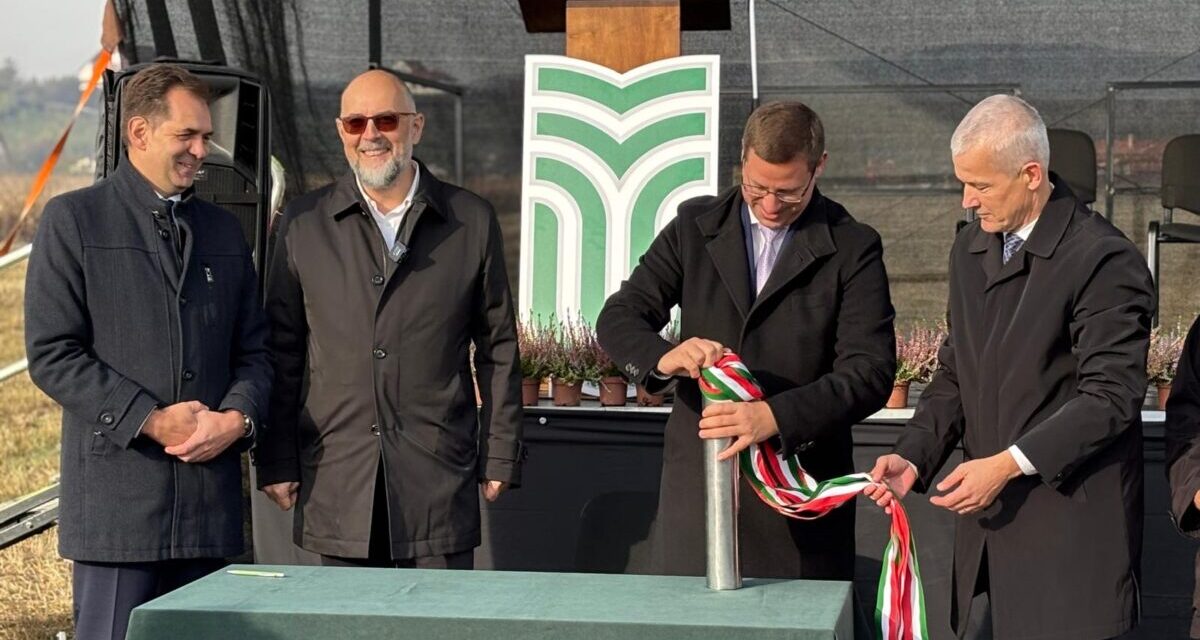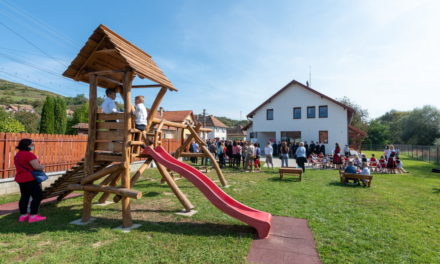On Thursday, the foundation stone of the Sapientia Transylvanian Hungarian University campus was laid in the Árkos border of Sepsiszentgyörgy.
With this, construction can begin on the ten-hectare area to provide 400-500 university students with modern education and housing conditions for the students of agricultural engineering, forestry engineering, sports and fine arts.
"The foundation stone and the corner stone are two important points of buildings. One holds, the other holds the building together, and if these are chosen well, the house will be storm-proof"
- said Reformed bishop Béla Kató. According to the president of the Sapientia Foundation, a lot has been calculated about how much concrete and iron is needed to make the university campus stand on solid foundations, but in fact the most important and strongest foundation stone of the building is the person himself.
Márton Tonk, the rector of Sapientia University, pointed out that it took 25 years to develop the network of the largest institution of Hungarian higher education in Transylvania in Cluj-Napoca, Marosvásárhely, Csíkszereda and now in Sepsiszentgyörgy. According to his interpretation, Sapientia is not only the most successful project of Hungarian national politics in the Carpathian Basin, but also represents the symbolic and real recapture of Hungarian-inhabited regions.
"Where there is a lake, sooner or later there will be frogs"
– the rector quoted Hungarian Prime Minister Viktor Orbán and explained: the new university building will certainly have enough university students and teachers in Sepsiszentgyörgy.
András Náhlik, acting dean of the Sepsiszentgyörgy Faculty of Sapientia EMTE, explained:
"educated people have a decisive influence on the survival of national regions. In an area of Székelyföld less covered by Hungarian-language higher education, in Sepsiszentgyörgy, they not only laid the foundation stone of a building, but also the building block of the future of Hungarians in Transylvania and Székelyföld.
- emphasized the dean.
The history of Hungarians in Transylvania is a history of constant restarts, since many times it was necessary to rebuild the community and institutions from scratch, and to show a vision for the community, Kelemen Hunor said. The president of the RMDSZ pointed out that the biggest problem now is the development of demographic indicators. Few children are born, many people emigrate, we are an aging society, but there is a solution for this.
We need public policies that keep hope alive and support young people in staying at home, starting a family and having children. That is why we need to build institutions and communities that show a vision for the future. The foundation and construction of nurseries, kindergartens, schools, and universities represent the future of the Hungarian community in Transylvania and Székelyföld.
With the Sepsiszentgyörgy campus of Sapientia University, a scientific citadel can be created that ensures the survival of the Hungarian community in the long term, its scientific background and opportunities to assert itself
Gergely Gulyás emphasized. The minister leading the Hungarian Prime Minister's Office stated: Sapientia is an important tool for national survival, and they hope that as the university strengthens, step by step, the revolution in quality will also take place.
At the ceremony in Sepsiszentgyörgy, the leaders of the university, Minister Gergely Gulyás, RMDSZ president Kelemen Hunor and Sepsiszentgyörgy mayor Antal Árpád also placed a time capsule, and then the pastors of the historical churches said a blessing on the future university campus.
Featured image: A time capsule was also placed in the foundation stone | Photo: Zsolt Kovács/Maszol













